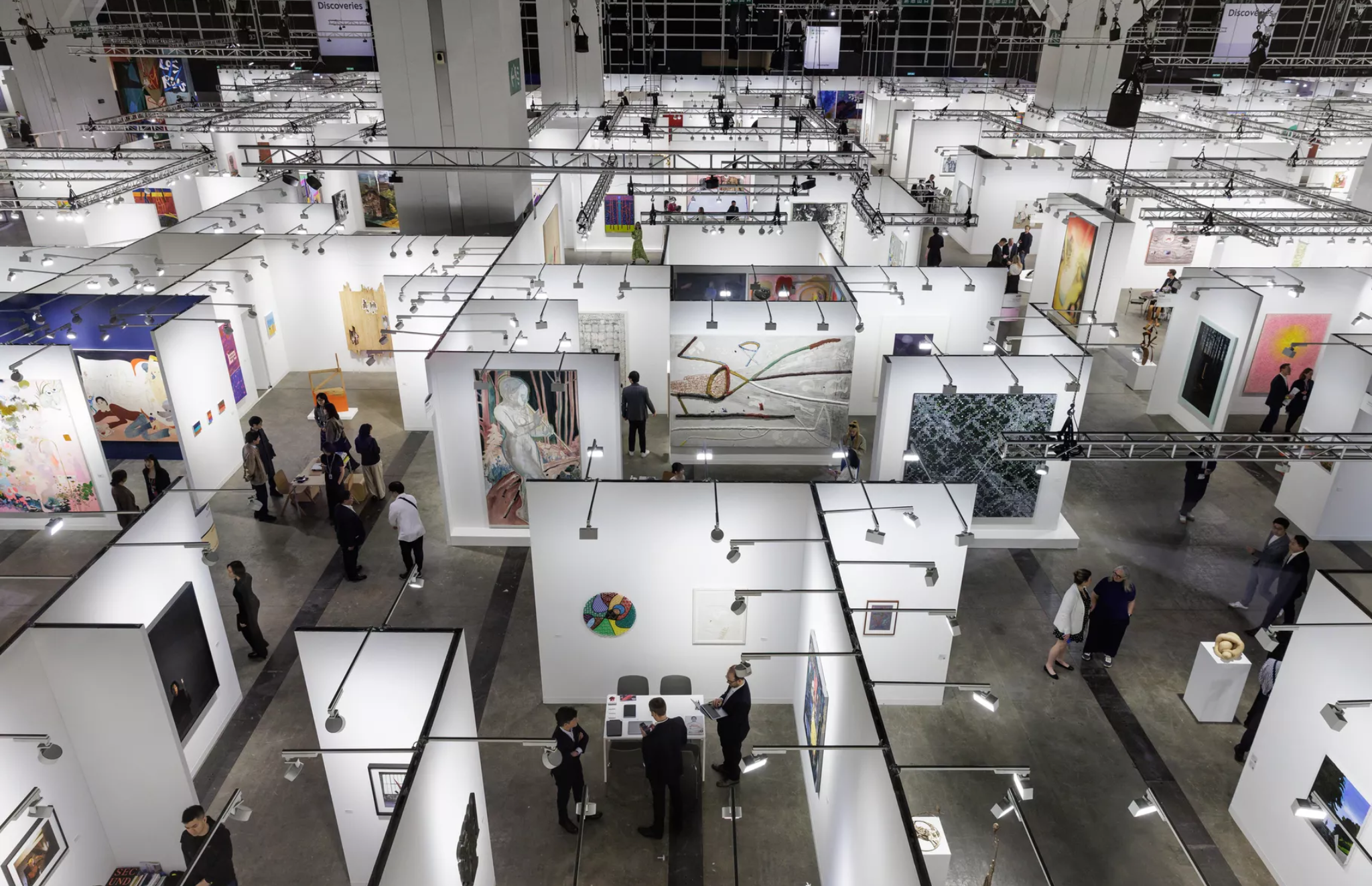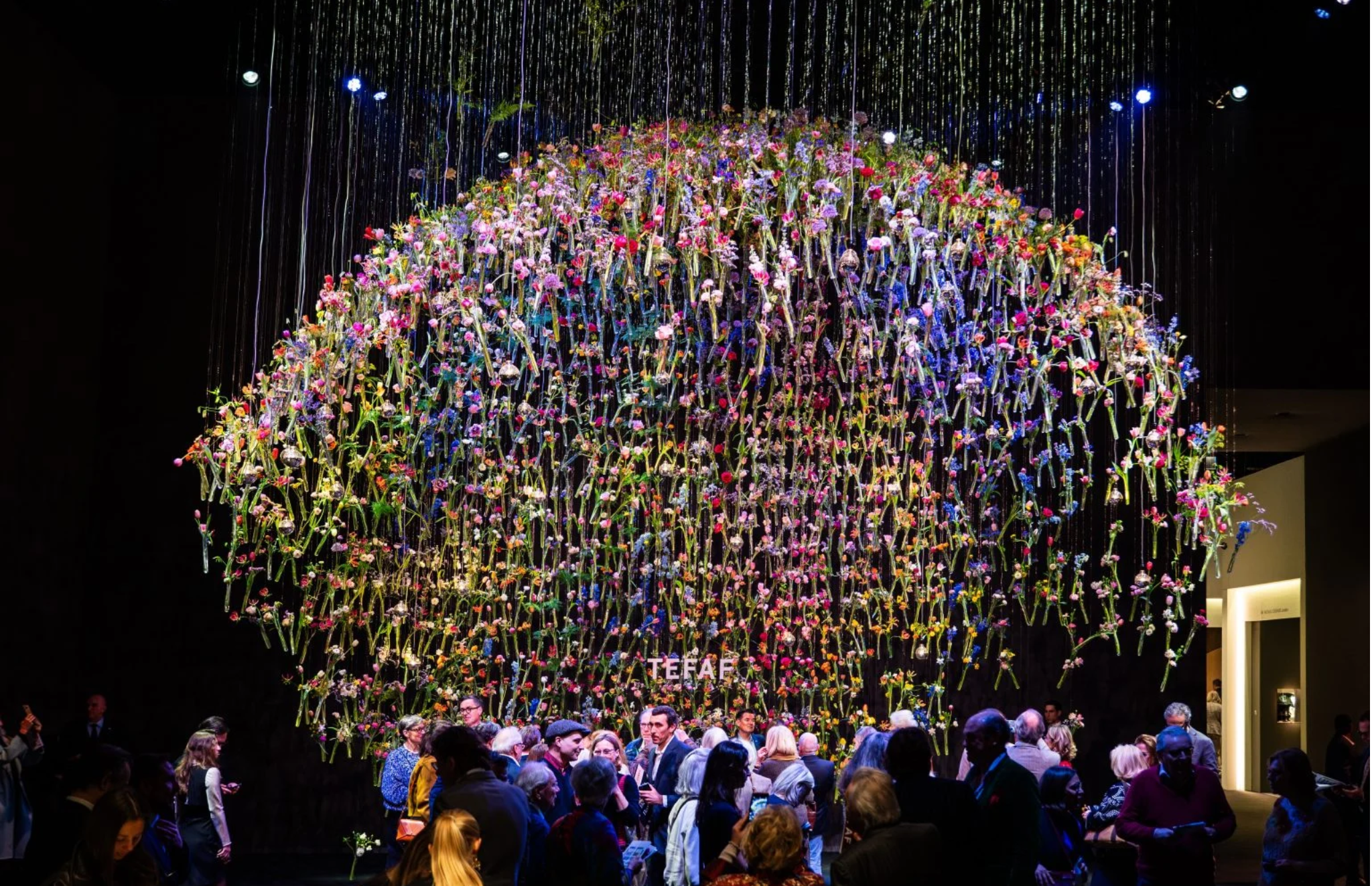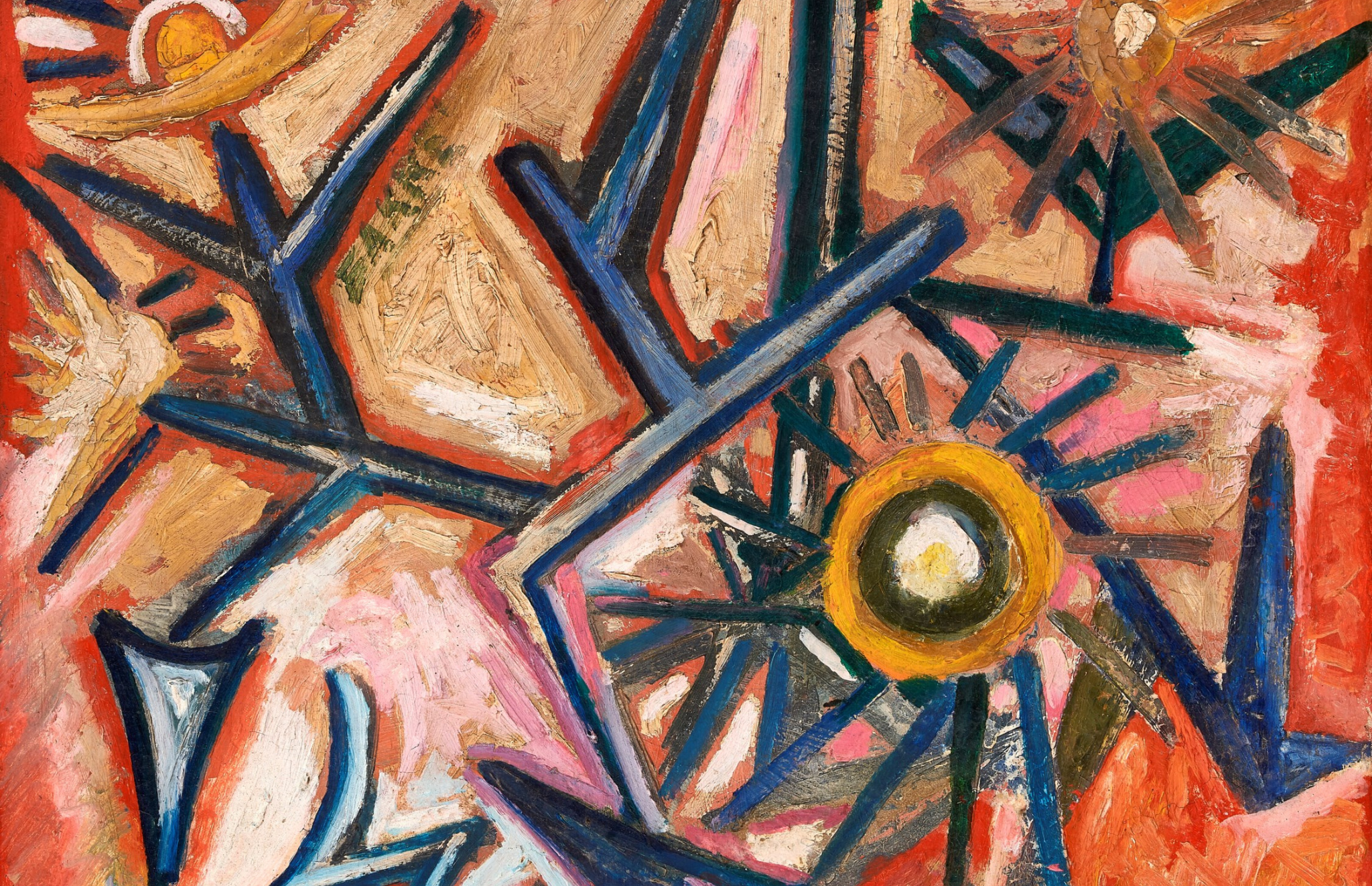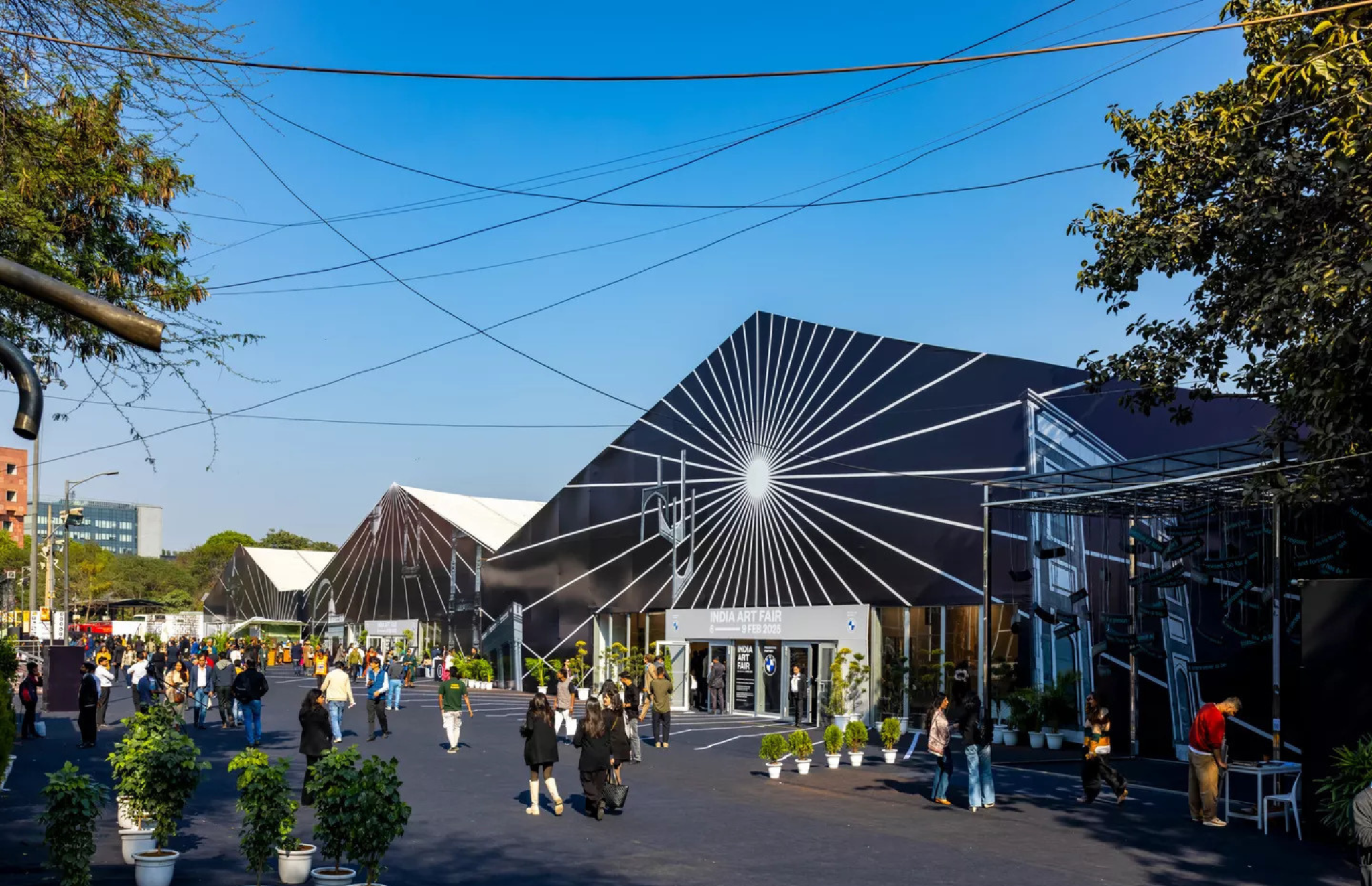ART NIGHT THURSDAY: ART EXHIBITIONS AT MUMBAI GALLERIES YOU SHOULD CHECK OUT THIS SEPTEMBER
With September here, and celebrations like Ganpati and other festivals beginning, Mumbai bursts into life, inviting everyone to dive into a dynamic and colourful world of artistic experiences. This vibrant energy is mirrored in the exciting array of art exhibitions happening across Mumbai’s art galleries.
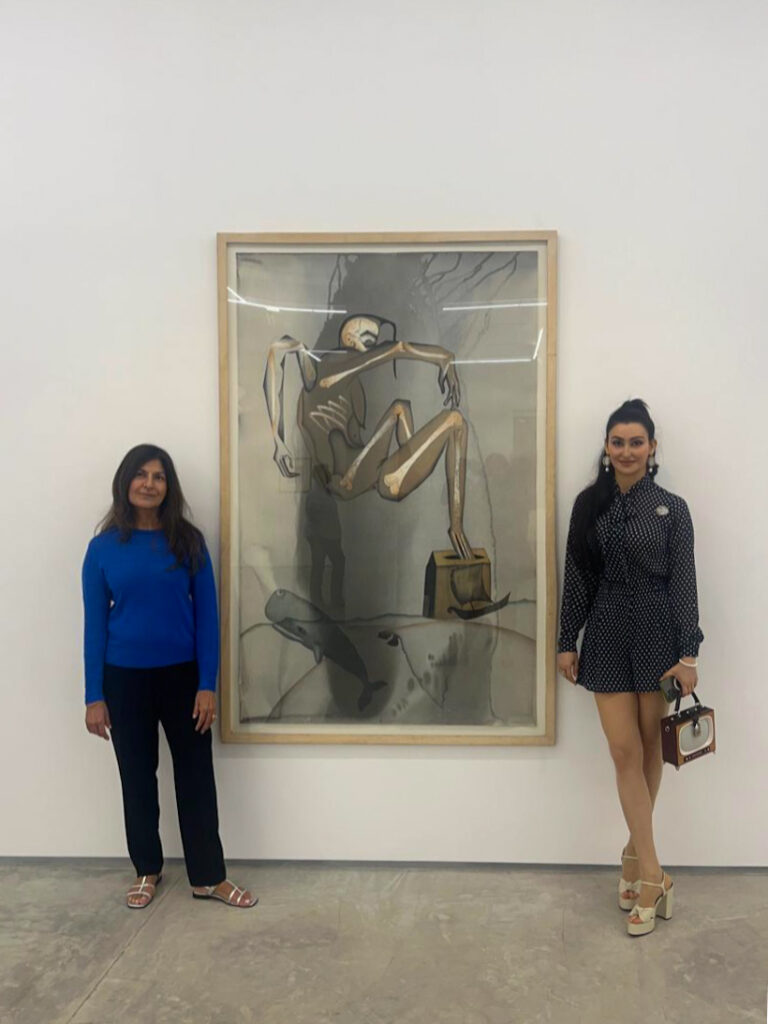
Photo courtesy: Shalini Passi
Here’s a list of some incredible art exhibitions in Mumbai that you should check out in the month of September.
1. Galerie Mirchandani + Steinruecke — Incarnate
September 12 to October 10
“Incarnate” showcases evocative works by nine artists, exploring the potent imagery of deities and demons in post-independence Indian art.
Bhupen Khakhar’s Ram Bhakt Hanuman (1998) is a striking piece. Geeta Kapur suggests Khakhar links holiness and sin, adoration and iconoclasm, portraying Hanuman in a subversive light. Atul Dodiya’s Houseboat (2000) from his Tearscape series reflects the Indian nation-state, drawing parallels to mediaeval depictions of fearsome goddesses, while Gieve Patel’s skull drawings complement the dark motifs.
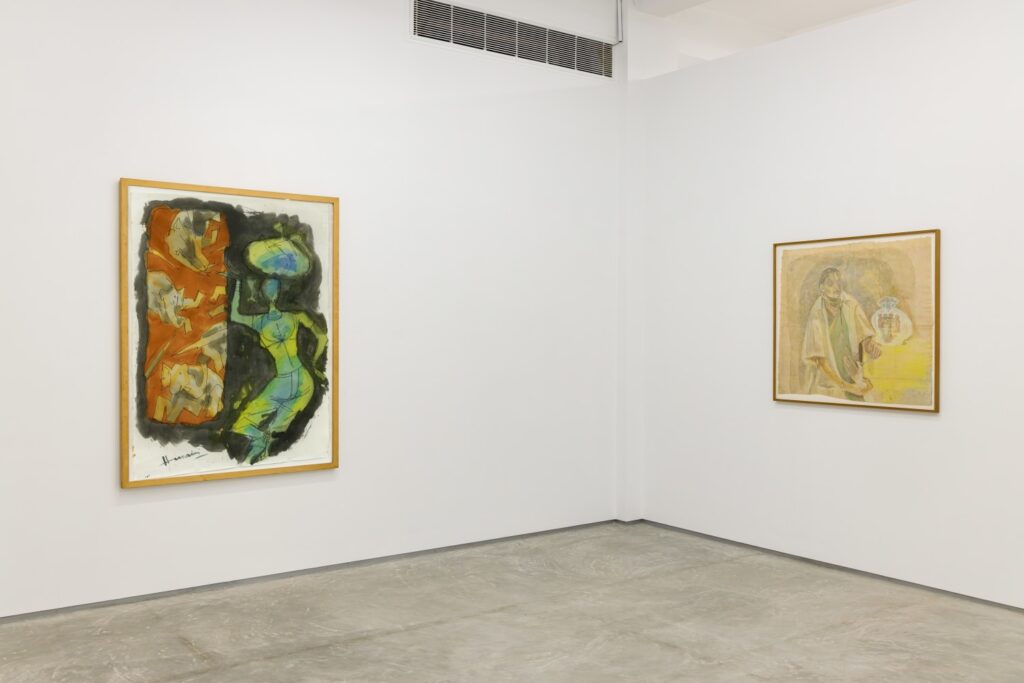
Photo courtesy: Galerie Mirchandani + Steinruecke
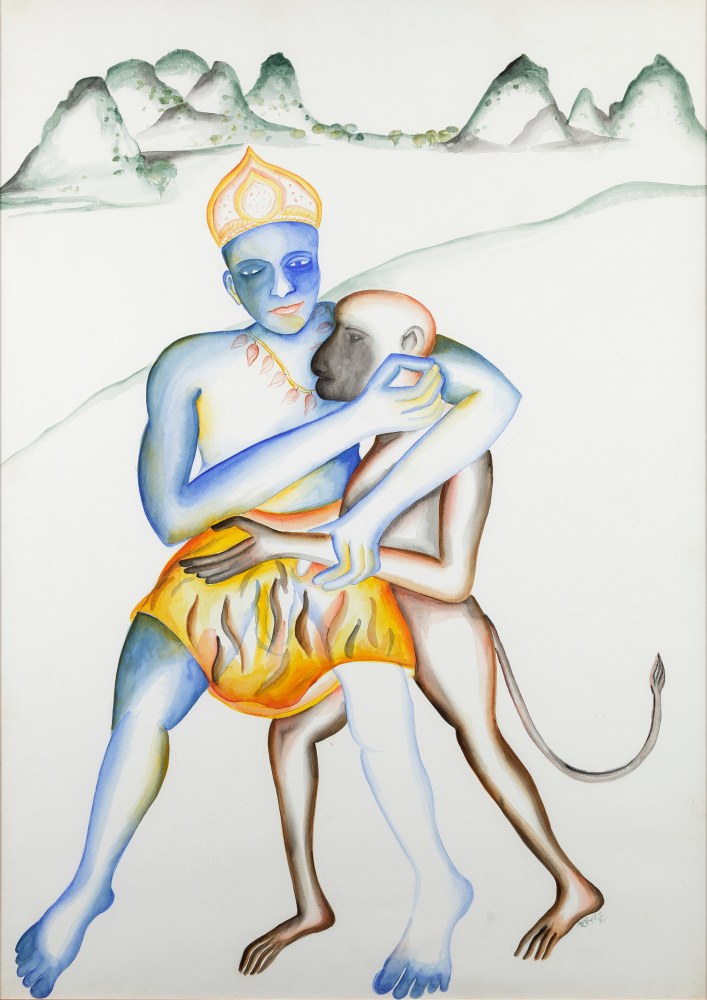
Photo courtesy: Galerie Mirchandani + Steinruecke and Bhupen Khakhar
Nilima Sheikh’s Thinking of Akka (1999) honours the poet-saint Akka Mahadevi with delicate, ethereal imagery. In contrast, Arpita Singh’s vibrant works re-appropriate the Lotus symbol, centralising female figures in a folk-art style. Jogen Chowdhury’s distorted pencil portraits evoke ancient cave art.
M.F. Husain’s Dancer (2000) merges human and animal energies, capturing a dancer in a Kerala jungle alongside elephants. Siji Krishnan’s Lovers (2012) creates a dreamy, floral world. Lastly, N.S. Harsha’s sleeping figures, surrounded by their simple possessions, appear to float between earth and sky, capturing a dreamlike state.
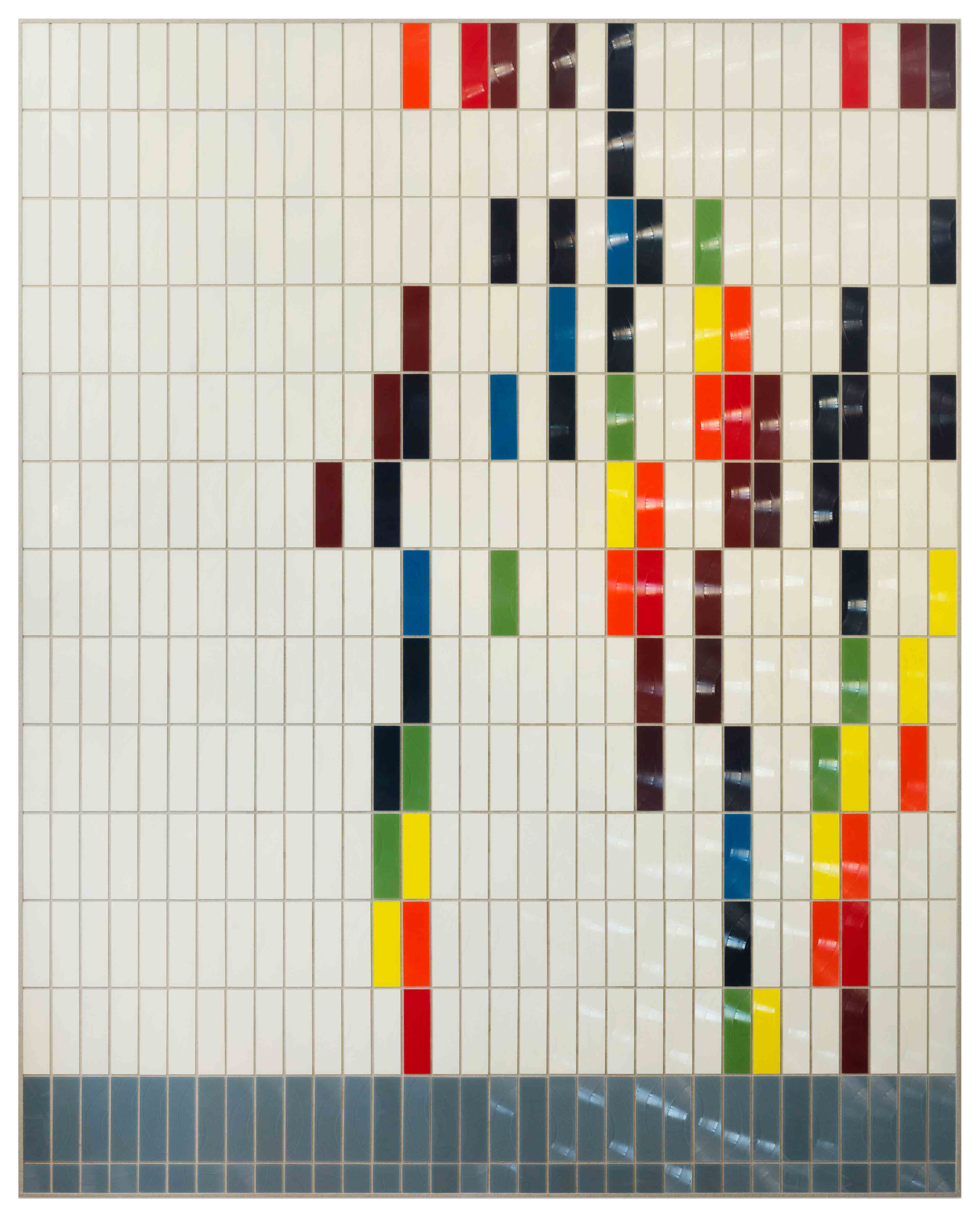
Photo courtesy: Galerie Isa and Gregor Hildebrandt
2. Galerie Isa — What Is Possible… What Is Promised
September 12 to October 28
What Is Possible… What Is Promised is an exploration of abstraction through the work of four distinct artists, each pushing the boundaries of form and material.
Gregor Hildebrandt merges music and visual art, using tapes, vinyl, and CDs to create compositions that blend Minimalism with personal nostalgia. His work reflects a rich interplay between sound, silence, and memory. Russna Kaur uses abstraction to explore identity, layering colours and textures to invite multiple interpretations. Her process-driven approach allows identity to emerge from the materials rather than being explicitly depicted.
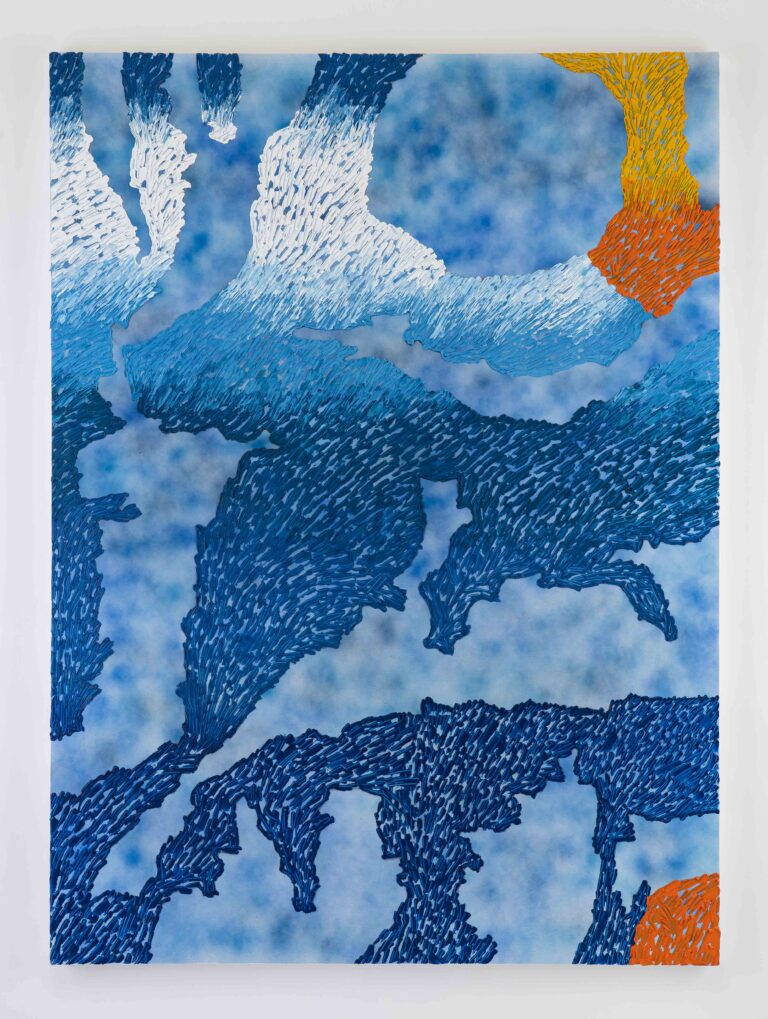
Photo courtesy: Russna Kaur and Galerie Isa
Gabriel Mills’ textured paintings meditate on time, love, and place. His work explores the connections between formal elements like harmony and tension, crafting complex visual landscapes that evoke deep introspection. Emilie Pugh, in contrast, navigates the delicate balance between the transient and permanent, using unconventional techniques to explore form and void. Her art embodies both presence and absence, capturing the cyclical nature of existence.
Together, these artists offer a profound meditation on the possibilities of abstraction, encouraging viewers to reflect on deeper connections between form, material, and meaning.
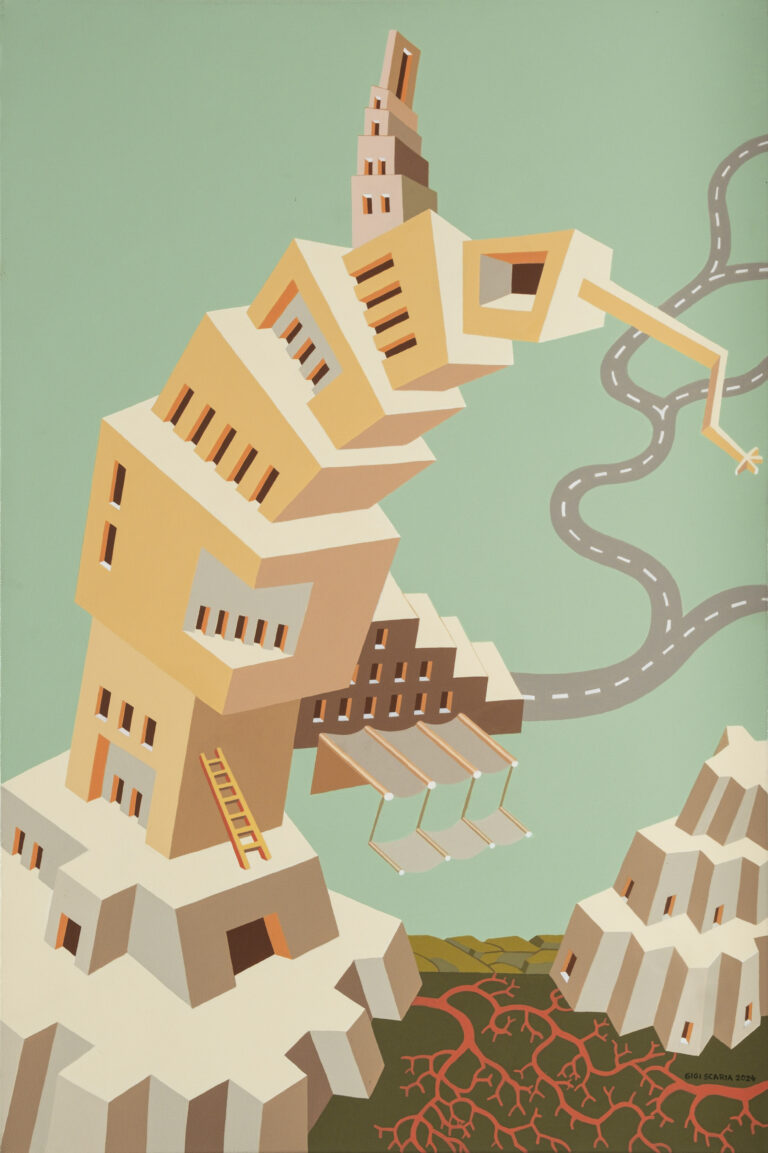
Photo courtesy: Chemould Prescott Road and Gigi Scaria
3. Chemould Prescott Road — Biophilia
12 September to 14 October
During the lockdown, nature powerfully reclaimed space, with dolphins in the Bosporus and flamingos in the Nerul wetlands. This resurgence inspired Gigi Scaria’s recent show, titled after Erich Fromm’s concept of ‘biophilia’ — a love for all life. However, Scaria’s paintings, sculptures, and videos evoke a melancholic tone, depicting a world fractured by human intrusion.
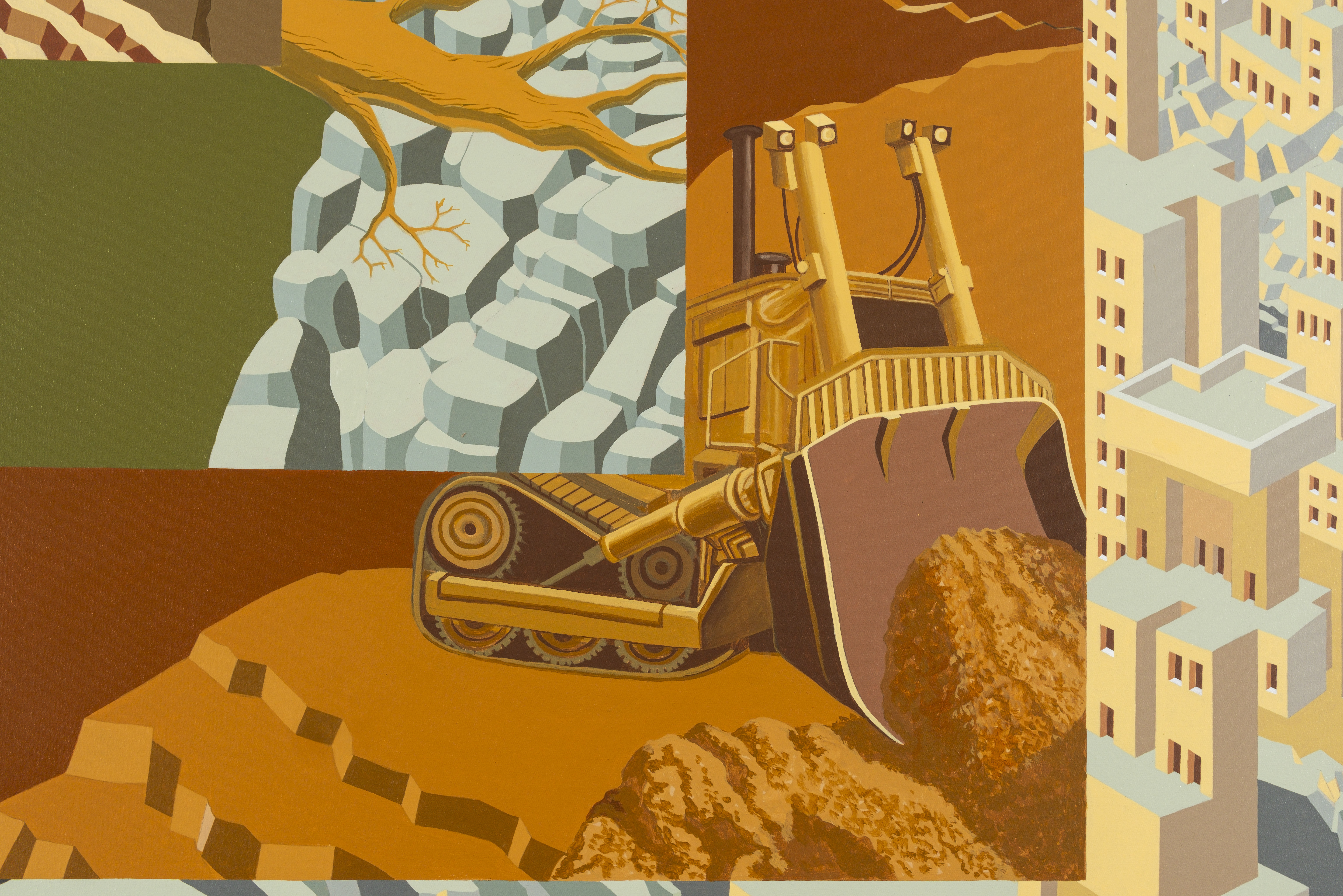
Photo courtesy: Chemould Prescott Road and Gigi Scaria
His works show the earth being quarried, precarious buildings in impossible landscapes, and shadowy branches spreading across the land — perhaps from infrastructure damage. In one painting, an elephant is trapped in scaffolding, a symbol of how human activities entrap nature. Scaria pulls statues from their pedestals, replacing them with green life, while a golden tree stands as a monument to nature’s resilience.
While Scaria’s title suggests biophilia, the artworks lean toward what Fromm termed ‘necrophilia’ — a fixation on decay and destruction. There are few signs of life, aside from a girl, an eagle, and a trapped elephant in dystopian scenes. Yet, despite these bleak portrayals, Scaria gently reminds us of nature’s enduring power, symbolised by the golden branch and green tree, a testament to nature’s eventual triumph over human excess.
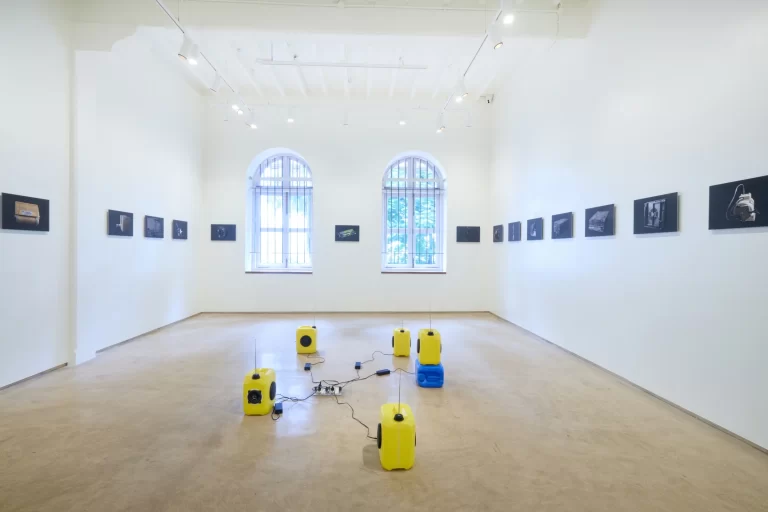
Image courtesy: Experimenter
Photograph by Abner Fernandes
4. Experimenter — Muqaddimah
12 September to 12 October
Aziz Hazara’s solo exhibition, Muqaddimah, at Experimenter – Colaba, explores the intersection of violence, politics, and everyday life in Afghanistan. Using video installations, photography, and sound sculptures, Hazara examines how war and shifting power dynamics shape one’s relationship with their surroundings.
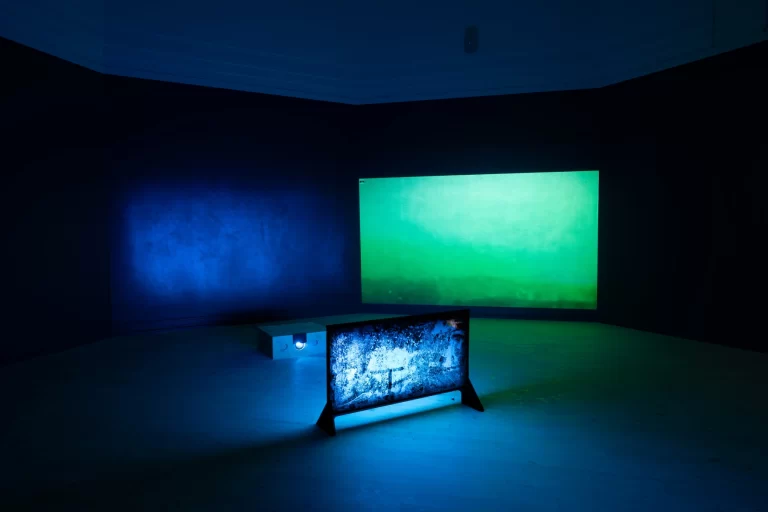
Image courtesy: Experimenter
Photograph by Abner Fernandes
He focuses on war detritus — objects left behind by foreign interventions and civil conflicts — repurposed in everyday life, reflecting Afghanistan’s turbulent history. Hazara employs surveillance tools like drones and radar systems, once used by military forces, to reverse the gaze and critique wartime surveillance practices.
Sound plays a crucial role, blending pop music, muezzin calls, and military noise, creating a sonic map of conflict. Hazara’s work challenges conventional portrayals of conflict zones, emphasising the instability of both images and sounds, while exploring the resilience and defiance found in the everyday acts of people living amidst violence.
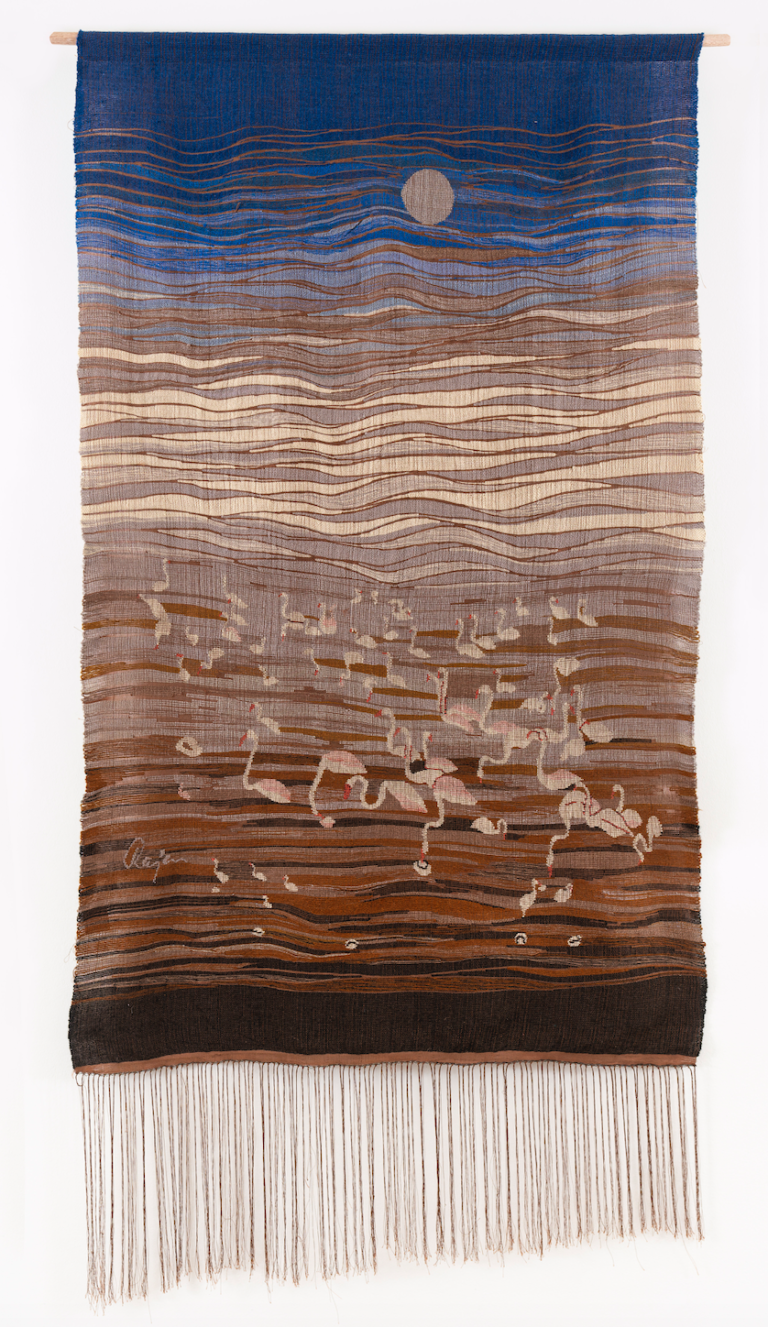
Photo courtesy: Chatterjee and Lal and Rajen Chaudhari
5. Chatterjee and Lal — Rajen (1931 – 2021): A Weaver of Magic
12 September to 26 October
Rajen Chaudhari’s work stands out for its inventive approach to weaving, treating the loom as a canvas for artistic expression. His creations were a fusion of tradition and innovation, blending classical weaving techniques with unconventional materials. From intricate tapestries to monumental curtains, his textiles showcased a deep understanding of structure, form, and design. Rajen’s work often mixed elements of Eastern and Western weaves, and he wasn’t afraid to push boundaries by incorporating feathers, cassette tapes, or clay tiles into his textiles.
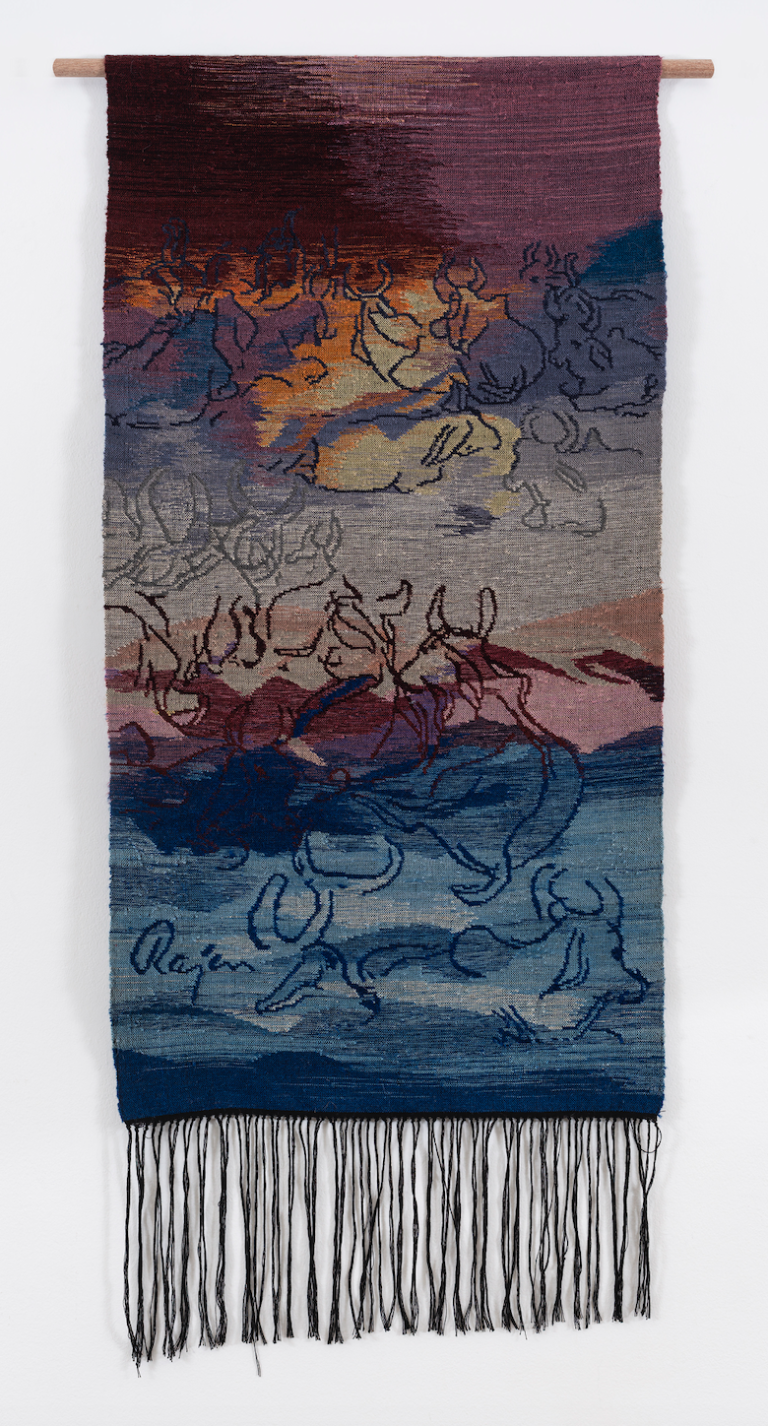
Photo courtesy: Chatterjee and Lal and Rajen Chaudhari
At WeaveLab, Rajen’s studio, his exploration of warp and weft produced a stunning variety of works — pile rugs, double-cloth weaves, and Gobelin wall hangings, among others. His ability to weave different cultures, styles, and even found objects into his art brought a unique dynamism to his textiles. Large-scale commissions, such as the 60 ft × 30 ft tapestry curtains for Ahmedabad auditoriums, demonstrated his technical mastery and bold artistic vision.
Rajen’s work was exhibited across major cities in India and abroad, and his tapestries continue to adorn walls worldwide. His art speaks to the timeless connection between craft and culture, blending spontaneity with skilled craftsmanship, leaving a lasting legacy in textile art.
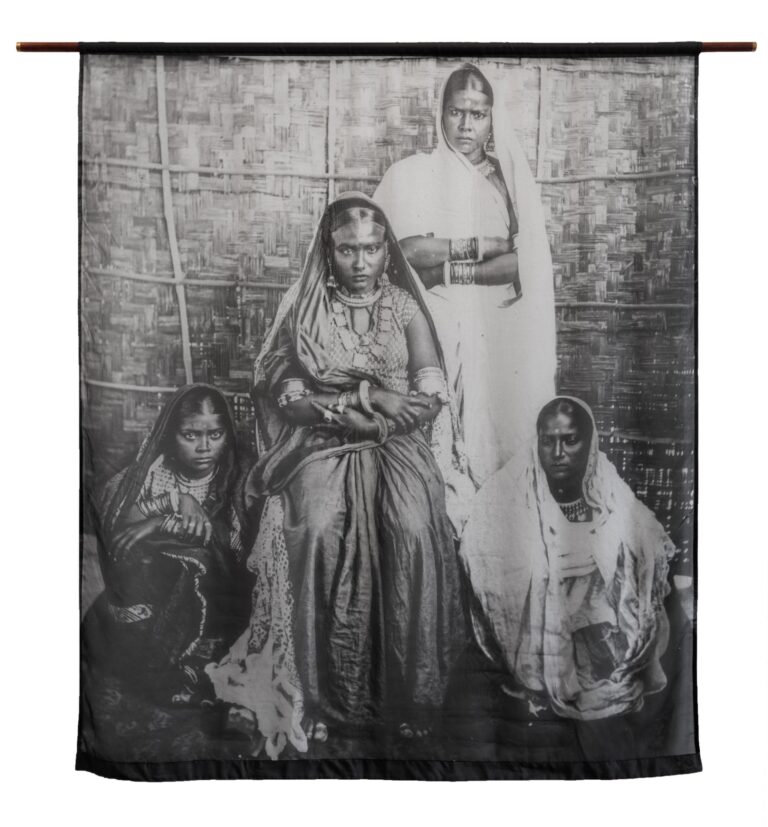
Photo courtesy: Jhaveri Contemporary and Shiraz Bayjoo
6. Jhaveri Contemporary — Avan Lapli (Before the Rain)
12 September to 19 October
Avan Lapli (Before the Rain), Shiraz Bayjoo’s first solo exhibition in India at Jhaveri Contemporary explores his research-driven practice in the Indian Ocean’s role in shaping global history through the movement of people, goods, and knowledge. His works — spanning textiles, ceramics, printmaking, and photography — highlight the ocean’s role in colonial extraction and trade.
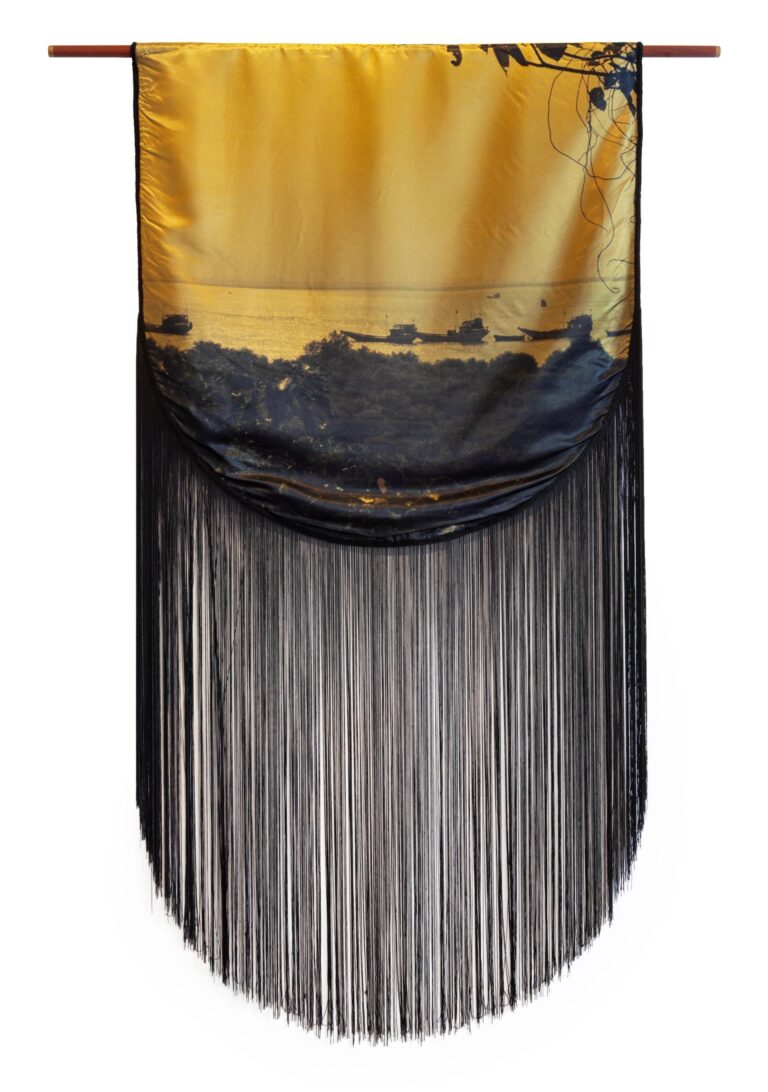
Photo courtesy: Jhaveri Contemporary and Shiraz Bayjoo
In his paintings, Bayjoo superimposes archival colonial images with pools of colour, evoking oceanic flows and memorialising the commodification of botanical species and labourers. His textile flags feature coastal and plantation scenes, revealing Kanga fabric undersides — a nod to the material culture shaped by women across colonial trade routes.
Inspired by French classical styles, Bayjoo’s ceramic sculptures depict scenes of ocean life rebelling against colonial forces, with crabs overpowering sailors. This interplay of resistance and oppression reflects the ocean’s ongoing entanglement in cycles of colonial injustice.
Text by Shalini Passi
Image Courtesy: Galerie Mirchandani + Steinruecke, Bhupen Khakhar, Galerie Isa, Gregoe Hildebrandt, Russna Kaur, Chemould Prescott Road, Gigi Scaria, Experimenter, Abner Fernandes, Aziz Hazara, Chatterjee and Lal, Rajen Chaudhari, Jhaveri Contemporary, and Shiraz Bayjoo
Find out more about the exhibits here:
https://www.galeriems.com/exhibitions/incarnate2
https://galerieisa.com/exhibition/current-exhibition/
https://www.gallerychemould.com/exhibitions/143-biophilia-gigi-scaria/
https://experimenter.in/exhibitions/133/overview/
https://jhavericontemporary.com/exhibitions/avan-lapli-(before-the-rain)


